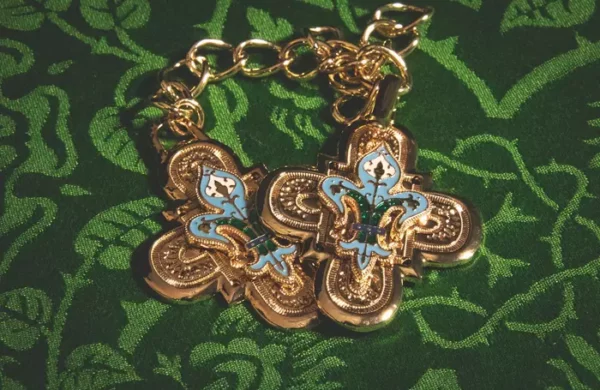
The Morse clasp, from the Latin “morsus” meaning “bite” or “catch,” is used to fasten the cope in liturgical attire. Originating between the 12th and 14th centuries, these clasps were essential for securing the cope during ceremonies. Historically ornate, featuring religious symbols and intricate designs, Morse clasps have evolved but kept their primary function. Today, they remain vital in church vestments, combining practicality with aesthetic appeal.
Like this:
Like Loading...

The six chief parts of the catechism are symbolized as follows: The Apostles’ Creed (Trinity) summarizes core Christian beliefs. The Lord’s Prayer (Censer) guides daily communication with God. The Office of the Keys and Confession (Keys) explains the Church’s authority to forgive sins. The Ten Commandments (Carved Stone) emphasize the moral law and humanity’s need for a savior. The Sacrament of the Altar (Chalice) discusses the Eucharist and Christ’s presence in it. The Sacrament of Holy Baptism (Shell) offers forgiveness, deliverance from evil, and eternal salvation.
Like this:
Like Loading...
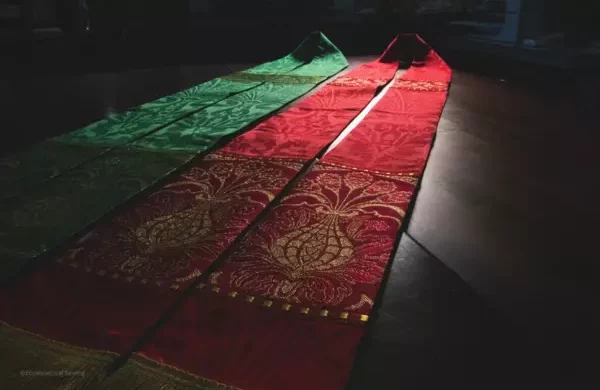
Saint Nicholas of Myra, a 4th-century bishop in modern Turkey, is famed for his secret gifts of gold to save three sisters from poverty. Celebrated on December 6th, he is known for his kindness, charity, and defense of Christian doctrine. His legacy inspires hidden acts of kindness and strong faith.
Like this:
Like Loading...
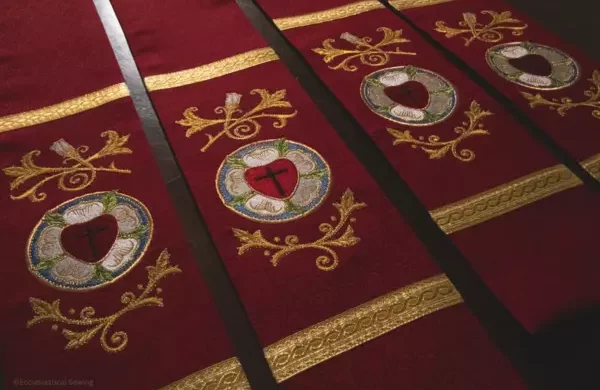
The Luther Rose, created in 1530, symbolizes Martin Luther’s core beliefs. It features a black cross representing faith in Christ for salvation, set against a red heart, signifying a living faith. Surrounding this is a white rose, symbolizing joy, comfort, and peace, with a blue sky background highlighting eternal hope. Encircled by a gold ring, it signifies everlasting bliss in Heaven. Widely used in Lutheran churches, the Luther Rose remains a powerful reminder of the Reformation’s impact.
Like this:
Like Loading...

St. Michael’s Prayer, composed by Pope Leo XIII in 1886 after a dramatic vision, seeks protection from Satan. Initially recited by priests after Low Mass, it became widespread until the 1960s liturgical reforms. Despite this, it remains a popular devotional prayer, especially during spiritual conflicts. Pope John Paul II revitalized its use in 1994, encouraging Catholics to recite it for protection against evil.
Like this:
Like Loading...

The Triquetra, or Trinity Knot, is a symbol with deep Christian significance, representing the Father, Son, and Holy Spirit as three unified entities. Originating in Norse and Celtic cultures, it became prominent in Christian art, especially in the Book of Kells. Today, it is commonly seen in jewelry and religious art, symbolizing the unity and eternal connection of the Trinity.
Like this:
Like Loading...
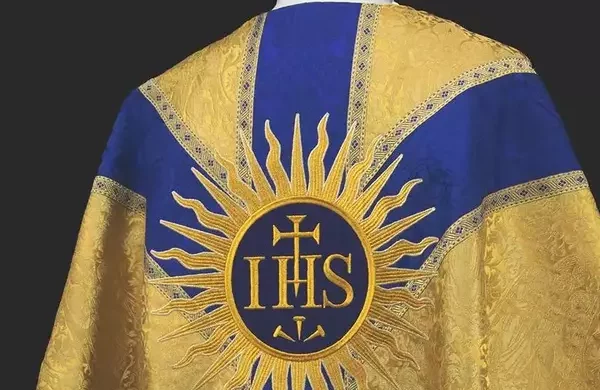
Gold is the rarest and most cherished color used in liturgical vestments, symbolizing the highest form of rejoicing and the divine light of Christ. It is prominently featured during Christmas, Easter, and significant feast days for Our Lord, the Blessed Virgin Mary, the angels, and non-martyr saints. Gold vestments date back to the 9th century, becoming more widespread by the 12th century, especially among high-ranking clergy.
Like this:
Like Loading...

In today’s world, churches face the temptation to adopt secular trends like efficiency and minimalism, risking the loss of their rich traditions and artistic beauty. Embracing these trends dilutes their role as beacons of inspiration. Art and beauty in church worship serve as powerful tools of evangelism, drawing people to their beauty and spiritual depth. Preserving these traditions is crucial for Christians, ensuring a legacy of faith and uniqueness.
Like this:
Like Loading...

Discover the elegance of the Dayspring White Gold Priest Chasuble. Crafted from durable Lichfield Brocade with gold orphrey bands and a majestic cross, it’s perfect for Christmas, Easter, and other special liturgical celebrations. Personalize with optional enhancements from the Dayspring Collection to suit your congregation’s spirit.
Like this:
Like Loading...
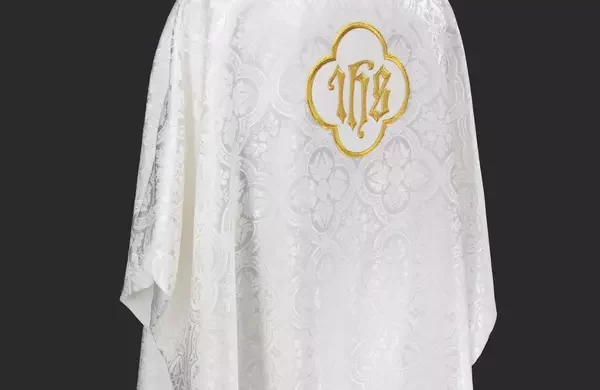
The Church, portrayed as the Bride of Christ, beautifully illustrates the profound love and faithfulness between Christ and His followers. This metaphor highlights a deep, sacrificial love akin to a marriage, as described by St. Augustine and St. John Chrysostom. It emphasizes the Church’s role in reflecting Christ’s purity and maintaining a loving relationship with Him. Ultimately, it points to a joyous future union with Christ, celebrated as the marriage supper of the Lamb in Revelation—a testament to the enduring bond between Christ and His Church.
Like this:
Like Loading...

Our stoles are top-notch in quality and craftsmanship. Unlike many competitors who use cheap polyester and mass production, our stoles are carefully handmade with premium brocades and reinforced with canvas for durability. We’re passionate about bringing beauty back to worship spaces and supporting talented DIY seamstresses who share our vision.
Like this:
Like Loading...
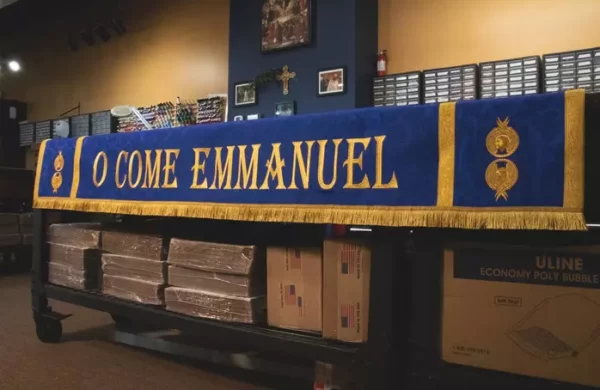
Uncover the story of blue in liturgical history! From medieval origins in Salisbury to modern Advent traditions, explore how this color symbolizes hope and anticipation. Join us on a journey through centuries-old practices to today’s vibrant celebrations!
Like this:
Like Loading...

We just finished a special Epiphany set that’s different from our usual work. Using white and green fabrics, we connected the Christmas season to Lent. Our green Luther Rose brocade and white accents make this set truly special for worship. We’re now thinking about a new set with darker green Winchester fabric and elegant Venezia tapestry. Want to see our creations and what’s coming next? Visit our Facebook Page to know more!
Like this:
Like Loading...

Stoles made of silk and wool are integral in Roman Catholic, Anglican, Lutheran, and Orthodox traditions, honoring sacred spaces and expressing denominational identity through intricate designs. Explore its ancient origins from Roman officials’ attire to symbolizing ministry duties
Like this:
Like Loading...

We’re thrilled to announce an expansion of our jewelry selection, now available at discounted prices for a limited time. These special prices won’t last long—once our collection is complete, prices will go up. So, if you see something you love, grab it now! We value your input and welcome suggestions for new items to carry. Exciting news: a Luther Rose pendant and pectorals are coming soon, along with new sacred heart necklaces. Don’t miss out on these exclusive deals and upcoming arrivals!
Like this:
Like Loading...
















You must be logged in to post a comment.